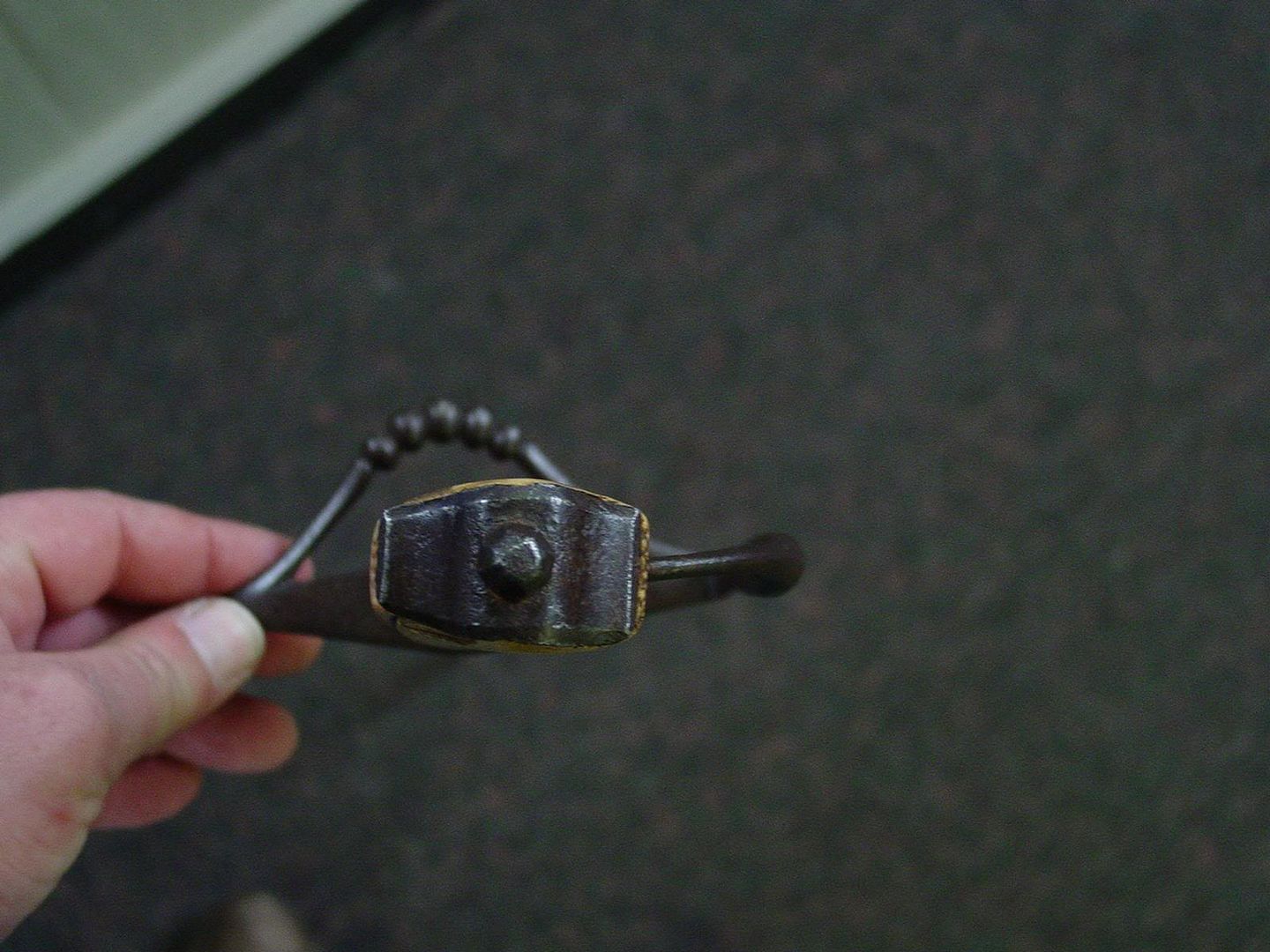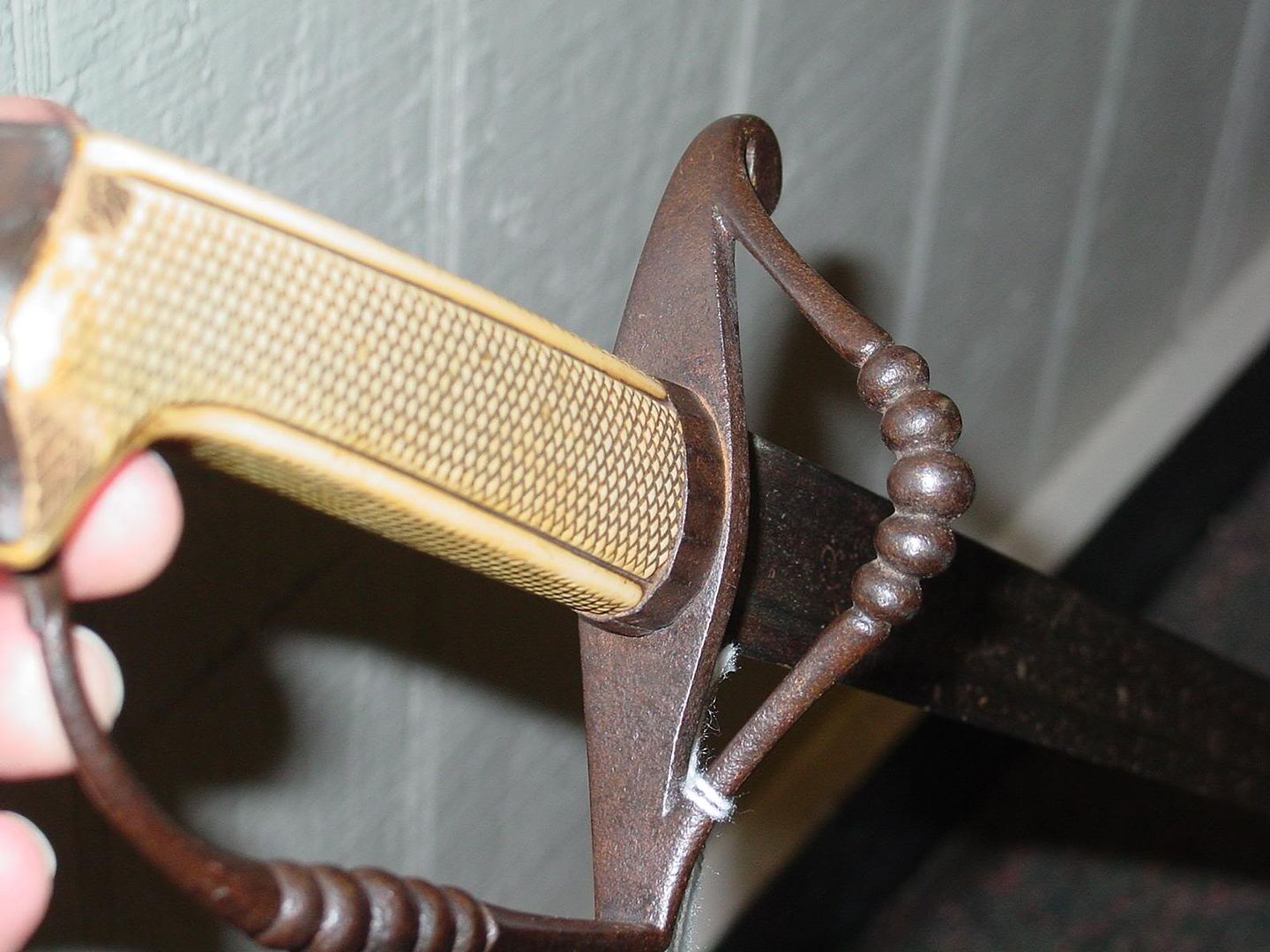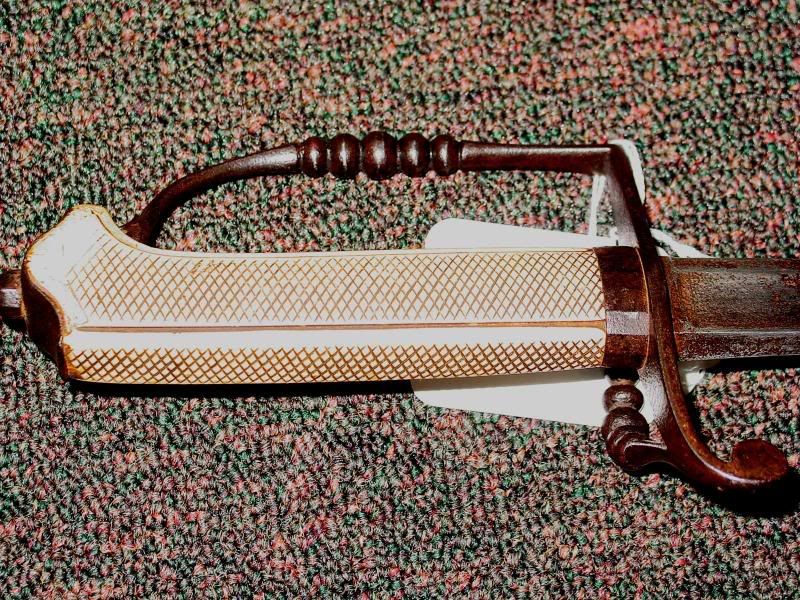
 |
|
|
|
|
#1 |
|
Member
Join Date: Dec 2005
Posts: 164
|
I have found a sword that I am trying to find info on and I have a very limited amount of time.I appreciate this forum so much and all the help you have given me.I hope I do not wear out my welcome
This sword is claimed to be from between 1790 and 1810 It is also claimed to have Ivory handles. I have looked through my limited books and cannot find an example of this sword. It has very vague markings ,one looks like a 2 with a period next to it. The others look like a diagonal design. Thank you for any help.      
|
|
|

|
|
|
#2 |
|
Member
Join Date: Dec 2005
Posts: 164
|
I adjusted the contrast on this pic to try to reveal markings better.

|
|
|

|
|
|
#3 |
|
Member
Join Date: Dec 2004
Location: Poland, Krakow
Posts: 418
|
Hello!
What you've got here is interesting combination of two or three different weapons. The handle reminds the karabela type, but this one is somehow unusual. The material is different then in real karabelas so this is just imitating one. Such shapes, often ususual were used in hunting or court hangers, where you can find many different shapes of handles. The hilt is from military weapon which is probably cutlass or pallash of infantry from the Napoleonic wars period. Such weapons were in use in Polish army, but maybe in France too. See picture attached, the second sword is from my museum (around 1810) and its hilt is identical (sorry, but I don't have better picture). Can't tell anything about the markings. The etchings are typical for the blades from the edge of the 18th and 19th centuries, often seen on hangers too. What is the lenght of this blade? If it's medium (usually around 40-60 cm - 15.5-23.5 inches) then it is hanger or so called Hirschfanger from German language. regards |
|
|

|
|
|
#4 |
|
Member
Join Date: Dec 2005
Posts: 164
|
Thank You wolviex
It is an identical Hilt for sure I appreciate the info Alan Last edited by Alan62; 5th March 2006 at 12:58 AM. |
|
|

|
|
|
#5 |
|
Arms Historian
Join Date: Dec 2004
Location: Route 66
Posts: 9,946
|
Hello Alan,
The example of so called 'five ball' or 'beaded' hilt was indeed, as Wolviex has shown and noted, a military hilt form used by both British and French as well as Poland and possibly a number of other European countries, and the period noted of latter 18th century is correct. It appears that this distinct motif using the five ball pattern originated in England c.1780, and was used on the straight bladed 'spadroon' sabres for officers. The French seem to have adopted the motif shortly thereafter, and the style was also carried into the United States, where it was used on military sabres as well. The style seems to have diminished overall by about 1810-20. Your example is most interesting as the trilobate pommel, as noted of karabela form, is completely uncharacteristic of British, French or American swords of this type. While the karabela type pommel is of course well known in this distinct sword that is an established national form in Poland, the pommel shape is key to a number of Islamic swords. Arabian pallasches carry this exact trilobate shape in examples of the 18th century in thier hilts, which were typically of repousse silver. I would suggest this sword was quite possibly made specifically for a British officer, and plausibly in the Gulf of Aden region , or influenced by Arabian swords with similar hilts that seem to have come from Yemen, specifically Hadramaut. The Gulf of Aden was a British protectorate c.1800 and much as in India, there were outfitters there who catered to British officers. The crosshatched ivory grips resemble those often seen on the ebony grips of French Napoleonic period swords, and there seems to have been considerable cross influence between British and French weapons just after the Egyptian campaigns, most significantly the 'mamluk' sabres. The browned patination of your example seems consistant with other examples I have handled of latter 18th century. A very nice example of what appears a British officers sword of c.1800 reflecting possibly Arabian influence. It is interesting to note however the Polish associations of the karabela as well, and the presence of the five ball hilt in some of thier swords. Despite that, I still sense this is a British sword. Best regards, Jim |
|
|

|
|
|
#6 |
|
Member
Join Date: Dec 2005
Posts: 164
|
Thank you Jim for that very detailed information.The dealer that I am looking at buying this from usually has many things that make reference to The Indo-Persia and also several turn of the century British Items as well as items from the late 18th century.The Mark on this sword that I described as a 2 with a period seems to actually be a script mark of some kind,(I believe it to be Middle eastern). The "2" is actually on its side and the Period above it.
Sometimes I wish these things could talk. I am still debating this purchase so I probably won't get much sleep tonight. Thank you and everyone again for all your insight a pic of the "2" again on the right hand side of the picture 
Last edited by Alan62; 5th March 2006 at 04:37 PM. Reason: Edited to correct Indo Persian war to Indo persia. |
|
|

|
 |
|
|